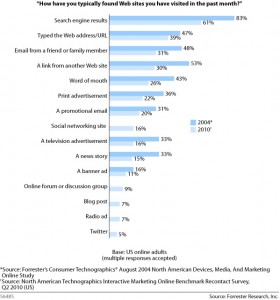Entries from January 2011
Tablet advertising is building momentum in 2011, as major OS developers such as Apple, Google, and RIM are adapting their mobile advertising campaigns into interactive and engaging tablet ads. The tablets large and sharp screen, and many interactive capabilities offer marketers many opportunities that are not obtainable in standard static ads. The interactivity potential of the tablet can translate into a more active consumer base, and possibly even consumer evangelism for companies that attempt to harness its capabilities.
One of the main advantages associated with Tablet advertising is it’s specified and targeted consumer market. The main users are males who are in a high-income bracket and are from 18 to 34 years old. This markets psychographics show that they have increased purchase intent when they are responding to an advertisement. In the report, Tablets: New Screens For Marketers, Paul Verna states that,
iPad users were more likely than users of iPhones and other connected devices to click on ads of various types, including video, text, multimedia and interactive. iPad users were also more likely than their counterparts to enjoy ads on connected devices, but all users shared a preference for ads that did not take them outside the application when they clicked through
Although, tablet marketing is not very popular yet, the Interactive Advertising Bureau recently launched an initiative to stimulate advertising on tablets. It is obvious that consumers want an experience and are seeking more than a stagnant advertisement. The new tablet technologies allow advertisers to satisfy this need and emphasize the significance of possessing a unique, entertaining, and interactive ad, which will be crucial to a company’s tablet marketing success.
This video exemplifies the new Tablet advertising that is possible in digital magazines

Tags: Uncategorized

It has become more and more apparent that there is no age limit to joining social networking sites such as Facebook. Recent data shows that the fastest growing user segment on Facebook is women aged 55-65 years old. Furthermore, according to the article “Parents of Young Children Prime for Social Marketing”
More than 60% of adults with kids of any age living at home used Facebook, Twitter or Myspace, vs. 51.3% of all adults, and the parents of young children were especially avid users.

This data has huge implications for marketers who are considering using social media as a media platform for advertising. It is trite and obvious that the consumers life stage (not demographics) influence their presence on these popular networking sites. This growing trend of young parents, with children under 6, being the most active signifies that Facebook is not just for teenagers anymore. Therefore, marketers should recognize this new statistic when designing their online campaigns for this specific target market. The segment of young parents is potentially very profitable since
They represent a group more likely than average to make many big-ticket, family-oriented purchases, such as cars, video cameras, PCs, large appliances or a new home
Social networking sites are a great opportunity for marketers who are trying to target consumers in this specific life stage.
Tags: Uncategorized
Advertisers use search engines as a marketing medium with the main goal of increasing awareness and to also “Get Found”. I think that the best way to ensure that searchers or potential customers find your specific website is to:
(1) Be knowledgable about their behaviour and intent
Being a seasoned web surfer and search engine user myself, I know that I want to land on a web page that answers all my questions and supplies me with all the information I need quickly. According to the December.14, 2006 article “Dan Russell: How Do People Use Search Engines” this is true for most search engine users
Russell mentioned how quickly people scanned, and that they often refined their query within 2-3 seconds of their initial result. He emphasized the importance of making sure your titles are written well so that your site won’t be overlooked in the 2-3 seconds before the user decides the results are not applicable
This implies that Marketers should make sure that they understand what there keywords and titles imply about the corresponding website. A website could be either informational, transactional, or navigational. However, over approximately 50% of queries are informational based so marketers that are trying to optimize their position need to ensure that they have informational type keywords. They also must have the corresponding information to meet with the searchers expectations, so that they can achieve their goal of “Getting Found”.
(2) Understand that Google is not the only way customers search for and find websites
The way customers obtain information is rapidly changing due to the increasing popularity of social media. Searching for a website or information used to consist of entering a search engine page such as Google or Yahoo, then finding an applicable site to gather the needed information.
Today, consumers increasingly rely on social media as a source for finding information online. This means marketers must adapt their search marketing strategies in order to be found. We recommend using social content to inform and drive search results, a process that you can start by planning search and social together and seeking internal staff and partners with research, technology, and social expertise. See the November 23, 2010, “How to Integrate Search With Social Media”
In 2004, 83% of consumers said they used search engine results to find Web sites; in 2010 that number decreased to 61%. Additionally, 16% of consumers surveyed said they used a social networking site to find Web sites in 2010. See the August 11, 2010, “The Future of Search Marketing”

Today searching isn’t just about search engines such as Google and Yahoo, as seen from the data above. Marketers need to acknowledge that potential customers are also using social networking sites such as Facebook and Twitter to find the information that they need to satisfy their questions and queries.
To be successful at “Getting Found”, there should be a focus on understanding what searchers are looking for on search engines so that businesses can make sure that they have the most optimal titles and keywords. However, businesses should focus on integrating social media into their SEO plans since sites such as Facebook are beginning to look like more and more like the new wave of search engines.
Tags: Uncategorized




